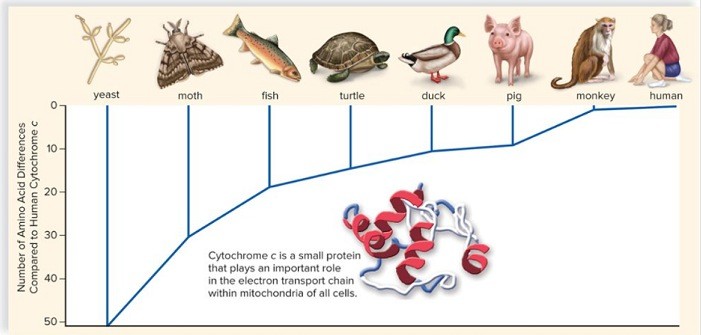The chart depicts the number of amino acid differences in cytochrome C between several different organisms and humans. What conclusions can you draw from this chart?
What will be an ideal response?
Answers may vary. Assumptions include cytochrome c is a "universal" biochemical and that it does not have a high mutation rate since it is being used to determine the evolutionary relatedness of organisms. Analysis of the data suggests that monkeys are more closely related and yeast is most distantly related to humans. Fish are more closely related to reptiles than to warm blooded ducks, pigs, monkeys, and humans. The biochemical data is consistent with anatomical similarities and differences.
You might also like to view...
The most common cause of epidemic waterborne diarrheal disease is ________.
A. Naegleria B. Acanthamoeba C. Giardia intestinalis D. All of the choices are correct.
In roots auxins tend to ________ cell elongation, in stems they promote cell elongation.
A. promote B. not influence C. have little effect on D. not be a factor in E. inhibit
What is true of introduced species? Check all that apply.
_____ They can be brought into their introduced range by humans _____ They are all native to the tropics. _____ They can be moved by natural forces from their native range to their introduced range. _____ They are always best controlled with biological control. _____ They will spread aggressively and out compete native species.
If similarities between two structures in different organisms reflect common ancestry, these structures are
A. analogous. B. heterologous. C. vestigial. D. homologous. E. homeotic.